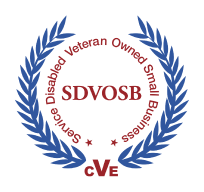AI as Evidence – The Legal Implications of Machine-Generated Intelligence
By Ken G. Tisdel, Chief AI and Innovation Officer, Founder of LCG Discovery Experts
Artificial Intelligence (AI) is rapidly reshaping how organizations generate, process, and use information. Content such as automatically summarized documents, predictive analytics outputs, and generative AI artifacts (e.g., images, reports, transcripts) can, and increasingly do, serve as evidence in legal proceedings.
But this introduces a fundamental question: Can machine-generated outputs be trusted as evidence, and more importantly, are they legally defensible?
At LCG Discovery & Governance, we advise that while AI offers remarkable insight and efficiency, its outputs must satisfy rigorous legal conditions, namely authentication, chain of custody, reliability, bias mitigation, and expert scrutiny, before being admitted in court.
This article unpacks:
- The foundational challenges around AI as evidence.
- Current legal standards and procedural mechanisms.
- Evolving trends in judicial policy and regulation.
- Practical guidance to establish defensible AI systems.
AI Evidence: Why the Courtroom Is Turning Its Gaze Toward Machines
The courtroom has long been comfortable with human-authored documents and photos. But AI-generated content presents new complexities:
- Opaque generation: With large language models (LLMs) and generative tools, content may be entirely machine-produced with no discernible human influence.
- Authentication challenges: Courts require reliable proof that a piece of evidence is what it purports to be.
- Chain-of-custody doubts: Machine processing paths are often undocumented, which risks gaps.
- Bias, hallucinations, and reliability issues: LLMs are known to hallucinate or replicate underlying biases.
These gaps can, and are, being litigated. For example, in Kohls v. Ellison, a Minnesota court excluded a generative AI-written declaration riddled with fabricated citations, emphasizing that unchecked AI introduces human-legal risk.
At its core, admitting AI-produced materials requires rebuilding traditional frameworks, including authentication, chain of custody, relevance, and reliability, around digital artifacts rather than people.
Authentication & Chain‑of‑Custody: The Two Pillars of AI Admissibility
Authentication under FRE 901 & 902
Under Federal Rule of Evidence 901, to authenticate evidence, a proponent must show it is what it claims to be. Courts are exploring how this applies when no human author exists, particularly for documents, reports, transcripts, or images entirely generated by AI.
One proposal (from the Federal Rules of Evidence Advisory Committee) would require identification of AI tools, training data, and verification strategies, equating machine output to expert testimony under Rule 702.
Transparency, logging model versions, and timestamping become mandatory, not optional.
Chain‑of‑Custody: Recording Every Step (Machine Included)
Chain of custody ensures evidence remains unaltered from creation to court. This has been a long-standing concern in both physical and digital forensics. With AI, the “custody” trail must extend beyond documents to include data inputs, model artifacts, system logs, and human validation actions.
AI-powered platforms are emerging to support the real-time logging of every access and modification. This enhances traceability and reduces human error, but only if those systems are validated, secured, and treated as part of the evidentiary lifecycle.
Reliability & Bias: Are We Admitting Hallucinated or Unfair Content?
Courts admit AI-generated evidence not only on the basis of authenticity, but also on the basis of relevance and reliability.
Reliability – Daubert & FRE 702 Revisited
Under FRE 702 and Daubert v. Merrell Dow, expert testimony must rely on scientifically valid methods. When machines serve as “experts”, e.g., facial recognition, synthetic video analysis, courts expect similar standards:
- Documented testing and peer review.
- Known error rates.
- Industry acceptance.
Without such validation, courts may treat AI-generated conclusions with skepticism, or exclude them entirely.
Bias, Hallucination & Deepfake Concerns
Generative models can replicate or amplify bias, invent false information, or create deceptive content. This matters when evidence pertains to discrimination, fraud, defamation, or credibility.
Legal professionals must ask:
- Is the model audited for bias?
- How are hallucinations prevented?
- Can the model’s output be independently verified?
These questions are now courtroom defaults, not hypothetical prompts.
Evolving Legal & Judicial Standards
State and Federal Guidelines
- California courts have recently mandated policies that address confidentiality, bias mitigation, oversight, and human verification in the use of AI.
- The Federal Rules Committee is reviewing amendments for Rule 707 (machine-generated evidence) and Rule 901(b) (authentication).
- Legal bodies across states (e.g., Delaware, Arizona, Illinois) and jurisdictions, such as Australia (New South Wales), are mandating the disclosure of AI usage in affidavits and reports.
Update cycles are accelerating. Organizations must proactively align with evolving standards because courts increasingly expect AI transparency today, not tomorrow.
Precedents & Sanctions
- Attorneys in multiple states have been fined (some up to $31,000) for filing briefs with AI-generated fake citations.
- Kohls v. Ellison banned AI-written declarations and mandated the disclosure of AI-generated content in sworn documents.
- In Tremblay v. OpenAI, courts ruled that generative AI prompts and results are discoverable materials.
These cases establish a warning: if AI generates it, it’s discoverable, and courts won’t hesitate to reject faulty or undisclosed machine output.
Practical Guide: Building Defensible AI-Evidence Pipelines
Categorize AI Outputs by Risk & Function
Define risk tiers:
- Low risk: Auto-transcripts for research.
- Medium risk: Predictive analytics in business processes.
- High risk: AI-generated documents or representations entering formal proceedings (contracts, affidavits, forensic reports).
Regulate high-risk uses under strict governance and legal review.
Authenticate: Attach Metadata & Provenance Logs
For each AI artifact, record:
- Source of input data.
- Model metadata (version, parameters, vendor).
- Timestamps and processing logs.
- Validation or human verification checkpoints.
Format should be standardized, secure, and immutable.
Maintain Chain‑of‑Custody: Real-Time Recording
Use secure platforms to log:
- Who accessed the file.
- When and how it was used.
- Any edits or model re-runs.
- Export, sharing, or human intervention actions.
Best practice: encrypt logs and incorporate audit routines.
Validate & Test: Error Rates, Peer Review, Bias Audits
AI outputs must be:
- Continuously tested on representative datasets.
- Periodically subject to bias and fairness analysis.
- Independently validated (e.g., by third-party or in-house experts).
- Documented in governance records with results.
This supports future Daubert/FRE 702 defenses.
Legal Readiness: Disclosure & Defense Materials
Procedures should include:
- Prompts, training data samples, and model documentation are available for discovery.
- Written policies on human verification and expert review.
- Counsel playbooks for addressing reliability and admissibility challenges in court.
These make AI artifacts transparent and defensible.
Case in Point: Implementing Governance at LCG
LCG recently deployed an AI-powered due diligence system for contract review and redaction:
- Authentication: All AI-generated redactions were stamped with invisible metadata with model version and audit hash.
- Chain of Custody: The system logged redaction inputs, outputs, the reviewers, and any overrides. All logs were encrypted daily.
- Validation: Quarterly bias and accuracy audits simulated contract review across historical data. Reports were included in board-level governance packets.
- Legal Playbook: In the event of litigation, the client had prepared model prompts, redaction logs, user reviews, audit reports, and a technical expert affidavit.
As a result, the system became court-ready, trusted by compliance teams, and defensible under cross-examination.
Final Takeaway: AI Without Integrity is Litigation Waiting
AI-generated content can be powerful, but when used as evidence, it’s not enough to be “smart” or efficient. Courts demand:
- Traceable outputs with human oversight.
- Verified and bias-audited processes.
- Immutable custody chains.
- Transparent policies and expert readiness.
Failure to meet these standards risks exclusion of key evidence, sanctions, reputational harm, and worst of all, unknown liabilities.
AI with Integrity means anticipating legal scrutiny before the code deploys.
References & Further Reading
- The integration of AI-generated evidence and legal challenges(Reuters, Cimphony, The Insurance Universe, redactor.com, Thomson Reuters, digitalevidence.ai, Moro & Moro, theforensicai.com, todaysmanagingpartner.com, Akerman LLP)
- Difficulties around chain-of-custody in AI systems(Akerman LLP, redactor.com)
- Digital forensics and AI-powered traceability(en.wikipedia.org)
- Expert evidence standards in AI admissibility(Cimphony, Moro & Moro)
- State court AI policies (e.g., California Judicial Council)(Reuters)
- Federal rules proposals: AI-evidence amendments(Bloomberg Law, Reuters)
- Sanctions for AI hallucinations in brief filings(Reuters, The Washington Post)
- Discoverability rulings in generative-AI litigation(Reuters)
About LCG Discovery & Governance
At LCG, we specialize in anchoring emerging technologies to legal integrity. Our cross-disciplinary team, spanning AI, forensics, compliance, and litigation readiness, ensures that your adoption of AI isn’t only innovative but also court-defensible. Learn more at www.lcgdiscovery.com or www.lcg-gov.us.







